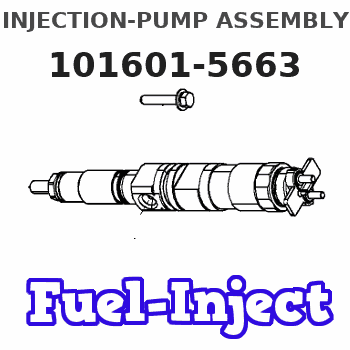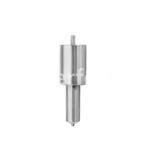Information injection-pump assembly
ZEXEL
101601-5663
1016015663
HINO
220006431B
220006431b

Rating:
Service parts 101601-5663 INJECTION-PUMP ASSEMBLY:
1.
_
7.
COUPLING PLATE
8.
_
9.
_
11.
Nozzle and Holder
23600-2133
12.
Open Pre:MPa(Kqf/cm2)
19.6{200}
15.
NOZZLE SET
Cross reference number
Zexel num
Bosch num
Firm num
Name
Information:
Lubricant Viscosity Chart
Commercial Oils
Failure to follow the commercial oil recommendations can cause shortened engine life due to piston carbon deposits, liner bore polish and/or abnormally higher increasing oil consumption.API CC and CD oils are unacceptable in this Caterpillar diesel engine.
* API specifications CF-4, CF-4/SH or CF-4/SGThe oil specifications above provide guidelines for the selection of commercial products. They may require shortened oil change intervals as determined by close monitoring of oil condition with Scheduled Oil Sampling (S O S). The same viscosity grades are recommended for commercial oils as for CAT oils.Lubricant Total Base Number (TBN)
New engine oil must have a TBN of 20 times (for Precombustion Chamber engines) and 10 times (for direct injection engines) the percent fuel sulfur as measured by ASTM (American Society if Testing Materials) D2896 method. Refer to the Fuel Specifications in this manual for additional information.Caterpillar DI Engines Only
Additional Notes
The percentage of sulfur in the fuel will affect the engine oil recommendations. For fuel sulfur effects, the ASTM D2896 procedure can be used to evaluate the residual neutralization properties of an engine oil. The sulfur products formation depends on the fuel sulfur content, oil formulation, crankcase blowby, engine operating conditions and ambient temperature.The fuel sulfur neutralization of today's new oil formulations along with direct injection (DI) system engines are more effective. Field results indicate that direct injection combustion (DI) systems and the oils now recommended for these engines will operate at an oil TBN equal to 10 times the fuel sulfur above 0.5% and using API CF-4 oils. Caterpillar requirements reflect this value of 10 times for DI engines.Caterpillar still maintains 20 times TBN value for precombustion chamber (PC) engines when using API CD, CE or CF-4 oil when related to fuel sulfur above 0.5%. Used oil analysis should be a part of the overall program to provide the assurance that a particular engine installation with all its parameters (engine, oil, operation, maintenance and fuel) are under control. Engines built prior to 1990 can continue to use DEO-CD single grade viscosity oil or commercial oils provided the engine operates to user satisfaction. Consult with your Caterpillar dealer for the latest lubrication recommendations.Synthetic Base Stock Oils (SPC)
The performance characteristics of the oil depends on the base oil and the additives. The additives in the oil will vary according to the properties of the base oil and the environment in which the oil will perform its function.Synthetic base stock oils are acceptable for use in Caterpillar engines if these oils meet the performance requirements specified for a particular compartment. The performance requirements for engines using synthetic oils is API CF-4 with API CE as an alternative.The use of a synthetic base stock oil does NOT allow extension of the oil drain period simply because of the use of synthetic oil. Any drain period extension must be validated by S O S (oil analysis and test evaluation) to ensure no excessive component wear occurs in a particular application.The synthetic oils have naturally low pour points
Commercial Oils
Failure to follow the commercial oil recommendations can cause shortened engine life due to piston carbon deposits, liner bore polish and/or abnormally higher increasing oil consumption.API CC and CD oils are unacceptable in this Caterpillar diesel engine.
* API specifications CF-4, CF-4/SH or CF-4/SGThe oil specifications above provide guidelines for the selection of commercial products. They may require shortened oil change intervals as determined by close monitoring of oil condition with Scheduled Oil Sampling (S O S). The same viscosity grades are recommended for commercial oils as for CAT oils.Lubricant Total Base Number (TBN)
New engine oil must have a TBN of 20 times (for Precombustion Chamber engines) and 10 times (for direct injection engines) the percent fuel sulfur as measured by ASTM (American Society if Testing Materials) D2896 method. Refer to the Fuel Specifications in this manual for additional information.Caterpillar DI Engines Only
Additional Notes
The percentage of sulfur in the fuel will affect the engine oil recommendations. For fuel sulfur effects, the ASTM D2896 procedure can be used to evaluate the residual neutralization properties of an engine oil. The sulfur products formation depends on the fuel sulfur content, oil formulation, crankcase blowby, engine operating conditions and ambient temperature.The fuel sulfur neutralization of today's new oil formulations along with direct injection (DI) system engines are more effective. Field results indicate that direct injection combustion (DI) systems and the oils now recommended for these engines will operate at an oil TBN equal to 10 times the fuel sulfur above 0.5% and using API CF-4 oils. Caterpillar requirements reflect this value of 10 times for DI engines.Caterpillar still maintains 20 times TBN value for precombustion chamber (PC) engines when using API CD, CE or CF-4 oil when related to fuel sulfur above 0.5%. Used oil analysis should be a part of the overall program to provide the assurance that a particular engine installation with all its parameters (engine, oil, operation, maintenance and fuel) are under control. Engines built prior to 1990 can continue to use DEO-CD single grade viscosity oil or commercial oils provided the engine operates to user satisfaction. Consult with your Caterpillar dealer for the latest lubrication recommendations.Synthetic Base Stock Oils (SPC)
The performance characteristics of the oil depends on the base oil and the additives. The additives in the oil will vary according to the properties of the base oil and the environment in which the oil will perform its function.Synthetic base stock oils are acceptable for use in Caterpillar engines if these oils meet the performance requirements specified for a particular compartment. The performance requirements for engines using synthetic oils is API CF-4 with API CE as an alternative.The use of a synthetic base stock oil does NOT allow extension of the oil drain period simply because of the use of synthetic oil. Any drain period extension must be validated by S O S (oil analysis and test evaluation) to ensure no excessive component wear occurs in a particular application.The synthetic oils have naturally low pour points
